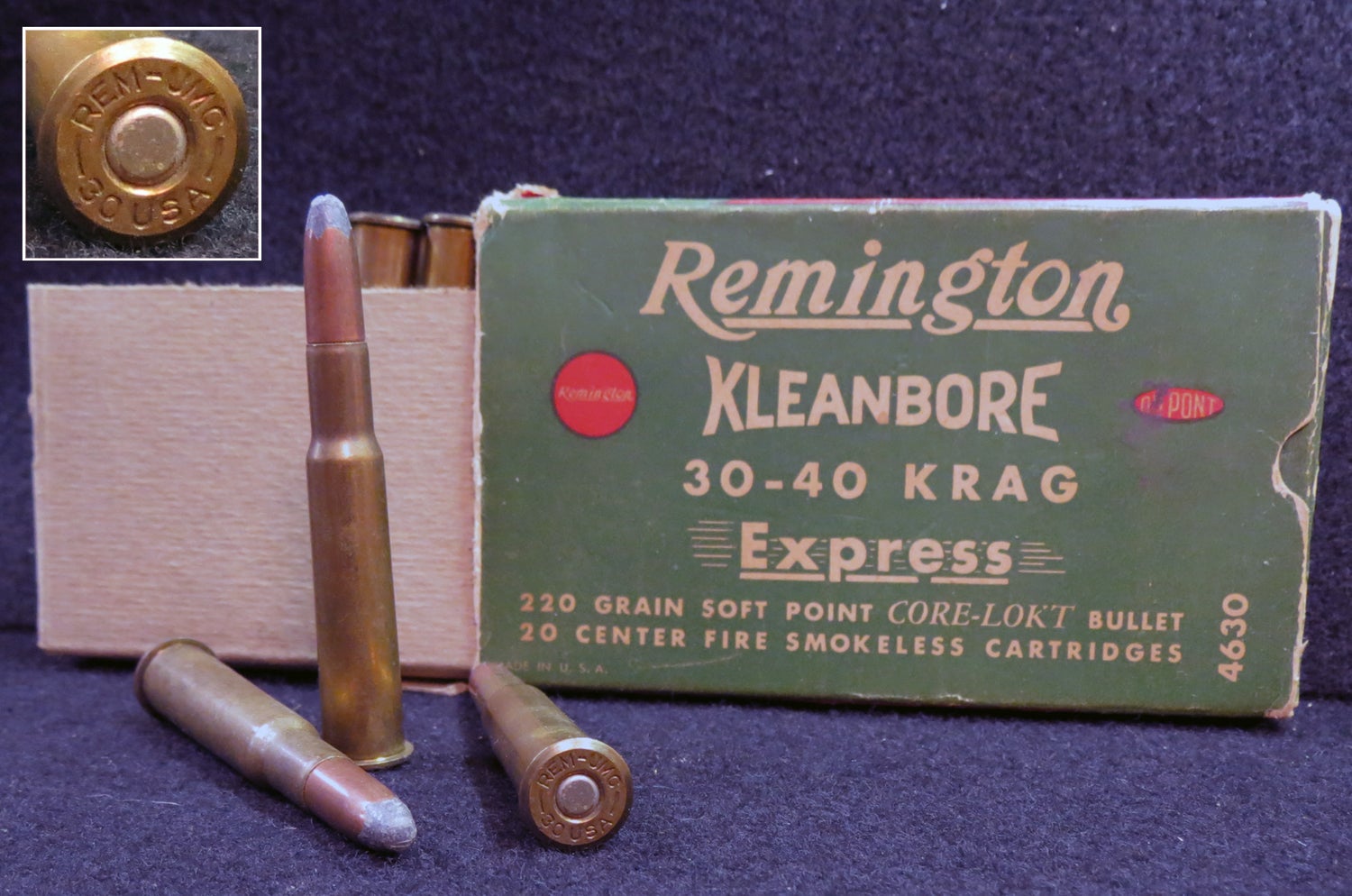The 30-40 Krag
Russ Chastain 06.24.13

The 30-40 Krag cartridge, also known as the 30 Army, 30 Government, and even the 30 USA, was used by the US Army for about a decade before being replaced by a better-designed and faster-moving round that itself was replaced within three years by the 30-06 Springfield. The Krag (not “Kraig” nor “Craig”) endures in a small way, no doubt due to the fine rifle in which it was issued, the Krag-Jorgensen.
One thing has been true for far more than a century: if you want to ensure a cartridge’s endurance, get it adopted by the USA’s military. Perhaps that’s why the 45-70 Government is still going strong, 140 years after its introduction in the 1873 Springfield rifle. As a military round, however, its reign was fairly brief, lasting just shy of 20 years before being supplanted by the 30-40.
As repeating rifles became more common, advances were being made in gunpowder as well; so-called “smokeless” powders offered better performance than black powder, without producing telltale clouds of white smoke and sulphurous fouling that could devour guns. There was also a new school of thought developing, and a move away from the big-and-slow approach to military ballistics.
1892: Enter the 30-40 Krag, which was the US military’s first smokeless-powder cartridge, as well as its first small-bore rifle cartridge. One of the Krag’s greatest boons was the rifle in which it came: the Krag-Jorgensen. Although this rifle wasn’t the easiest gun to mass-produce, it was perhaps the smoothest-operating bolt action rifle ever designed.
The Name and the Failing
The 30-40 cartridge was known as the 30 Army (or the 30 Government) until it hit the streets in commercial rifles around 1896. Cartridges had been named in a caliber-and-powder-charge manner for so long that some found the habit hard to break. For instance, although the 45-70 really did use a powder charge of 70 grains of black powder, the 30-40 never was designed for black powder (the same is true of the classic 30-30 Winchester, which arrived a few years later), but was named that way for commercial use mainly for convenience and/or comparison.
Headstamps on some old Remington and Winchester rounds read “30 USA” (see photo), but newer cartridge heads from both of those companies are stamped “30-40 KRAG.”
Initially loaded with a 200-grain bullet that moved at roughly 2,000 fps (feet per second), the Krag was a great improvement over the old 45-70 — for shooting people, anyhow, which was its purpose. But the main improvement, from a military point of view, was that instead of the fairly weak-action 1873 Springfield trap-door single-shot rifles, soldiers could now tote a stronger bolt-action repeater, along with ammo that weighed considerably less per round.
Unfortunately for its longevity, the Krag was a rimmed round, and that was probably the single largest factor in its demise. Rimmed cartridges are finicky about feeding from a magazine, and this fact dooms them when shots must be fired with any kind of sustained rapidity.
The Rifle
The Krag-Jorgensen rifle had many admirable features, including a magazine that rifle expert Frank de Haas called “novel, clever, and somewhat complicated.” The mag is to the right of the receiver, and loads from the top. It feeds ammo sideways into the rifle’s action — unless you engage the magazine cutoff, which allows you to open and close the bolt without ammunition feeding from the magazine.
The one thing universally praised by those who know and love the Krag-Jorgensen rifle is the smoothness of its action. After more than 120 years, it remains just about the smoothest bolt action rifle ever made, especially among military arms.
In Conclusion
In the end, the limitations of the 30-40 Krag led to its replacement as a military cartridge in 1903, but it has hung on for more than a century, due to good performance on game and the widespread availability of Krag-Jorgensen rifles after its military use was discontinued. Very few commercial rifles have been chambered for the 30-40 Krag in the past eighty years or so.
The 30-40 has taken its fair share of big game, and can still do the job, although its performance is of course outpaced by the round that took its place in 1906: The venerable 30-06. If you can find factory Krag ammo these days, it will probably be limited to 180-grain bullets suitable for thin-skinned critters.
With handloads using suitable bullets loaded to appropriate velocity, it will still do the job on just about anything around, but better choices abound. I guess that’s why Dad never did hunt with the sporterized Krag that he restocked and often fondled, but couldn’t quite bring himself to take hunting.